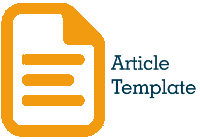APPLICATION OF CHATBOTS FOR THE ELECTRICAL ENGGINEERING
DOI:
https://doi.org/10.35457/vcq6d133Keywords:
Chatbot, Student Service, Education, WebsiteAbstract
High-quality campus services play a crucial role in supporting educational activities in higher education institutions. One approach to enhancing these services is by leveraging chatbot technology. Chatbots can provide swift and efficient responses to students, simplifying access to information and facilitating various transactions. Moreover, chatbots help reduce the workload of administrative staff, allowing them to concentrate on more complex responsibilities. However, data security and privacy remain critical aspects that require further improvement to ensure user trust. This study focuses on evaluating a chatbot application designed to support administrative services in the Electrical Engineering Department of the State Polytechnic of Malang using the string matching method. The evaluation process includes testing the chatbot’s functionality, interaction quality, compatibility, security, and overall performance. Results indicate that the chatbot achieves an accuracy rate of 90% in addressing students’ inquiries. Most users expressed satisfaction with the chatbot’s response speed and precision. These findings suggest that chatbots are an effective solution for improving administrative services, particularly in the context of the Electrical Engineering Department at the State Polytechnic of Malang.
Downloads
References
[2] K. Bala, M. Kumar, S. Hulawale and S. Pandita, "Chat-bot for college management system using A.I," International Research Journal Of Engineering and Technology (IRJET), vol. 4 no. 11, p. 2030 – 2033, 2017.
[3] T. Haryanti, "Sistem Informasi Disposisi Online Didukung Teknologi Short Message Service," Jurnal Ilmiah NERO , vol. 4 No.1, pp. 47 - 55, 2018.
[4] E. V. d. Broeck, B. Zarouali and K. Poels, "Chatbot advertising effectiveness: When does the message get through?," Computers in Human Behavior, vol. 98, pp. 150-157, 2019.
[5] D. Zumstein and S. Hundertmark, "Chatbots - An Interactive Technology for Personalized Communication," IADIS International Journal on WWW/Internet, vol. 15, pp. 96-109, 2017.
[6] K. U. Syaliman, Yuliska and N. F. Najwa, "Chatbot Sebagai Wadah Informasi Perkembangan Covid-19 di Kota Pekanbaru Menggunakan Platform Whatsapp," IT Journal Research and Development (ITJRD), vol. 5 No. 2, pp. 234 - 245, 2021.
[7] Shawar, B. Abu and E. Atwell, "A comparison between ALICE and Elizabeth chatbot systems," University of Leeds, School of Computing research report, 2002.
[8] Afrianto, M. F. Irfan and S. Atin, "Aplikasi Chatbot Speak English Media Pembelajaran Bahasa Inggris Berbasis Android," Komputika : Jurnal Sistem Komputer, pp. 99 - 109, 2019
[9] Website system informasi UM," [Online]. Available: Katalog UM | Universitas Negeri Malang (UM). [Accessed 09 Desember 2022].
[10] Website Perkembangan Industri Chatbot Berbasis Kecerdasan Buatan di Indonesia," [Online]. Available: Perkembangan Industri Chatbot Berbasis Kecerdasan Buatan di Indonesia (goodnewsfromindonesia.id). [Accessed 09 Desember 2022].
[11] Hidayat, R. (2020). Pengembangan Chatbot Pada Sistem Informasi Akademik di Politeknik Negeri Malang. Jurnal Teknologi Informasi dan Sistem Informasi, 6(2), 121-130.
[12] Pramono, A. D., & Adi, S. N. (2021). Implementasi Chatbot untuk Pelayanan Akademik di Politeknik Negeri Malang. Prosiding Seminar Nasional Informatika (SEMNASIF), 1(1), 123-128.
[13] Santoso, A. B., & Lestari, R. (2019). Implementasi Chatbot untuk Sistem Informasi Akademik di Politeknik Negeri Malang. Jurnal Rekayasa Sistem dan Teknologi Informasi, 3(2), 180-186.
[14] Utami, A. F., & Haryono, E. (2020). Pengembangan Chatbot Sistem Informasi Akademik di Politeknik Negeri Malang. Jurnal Informatika: Jurnal Pengembangan IT, 5(2), 118-126.
[15] Widyawati, A. R., & Kurniawan, H. (2021). Analisis Kebutuhan dan Implementasi Chatbot Sistem Informasi Akademik di Politeknik Negeri Malang. Jurnal Informatika, 5(2), 207-213.
Downloads
Published
Issue
Section
License
Copyright (c) 2025 Antivirus : Jurnal Ilmiah Teknik Informatika

This work is licensed under a Creative Commons Attribution-ShareAlike 4.0 International License.
Authors who publish with this journal agree to the following terms:
- Copyright on any article is retained by the author(s).
- Author grant the journal, right of first publication with the work simultaneously licensed under a Creative Commons Attribution License that allows others to share the work with an acknowledgement of the work’s authorship and initial publication in this journal.
- Authors are able to enter into separate, additional contractual arrangements for the non-exclusive distribution of the journal’s published version of the work (e.g., post it to an institutional repository or publish it in a book), with an acknowledgement of its initial publication in this journal.
- Authors are permitted and encouraged to post their work online (e.g., in institutional repositories or on their website) prior to and during the submission process, as it can lead to productive exchanges, as well as earlier and greater citation of published work.
- The article and any associated published material is distributed under the Creative Commons Attribution-ShareAlike 4.0 International License











